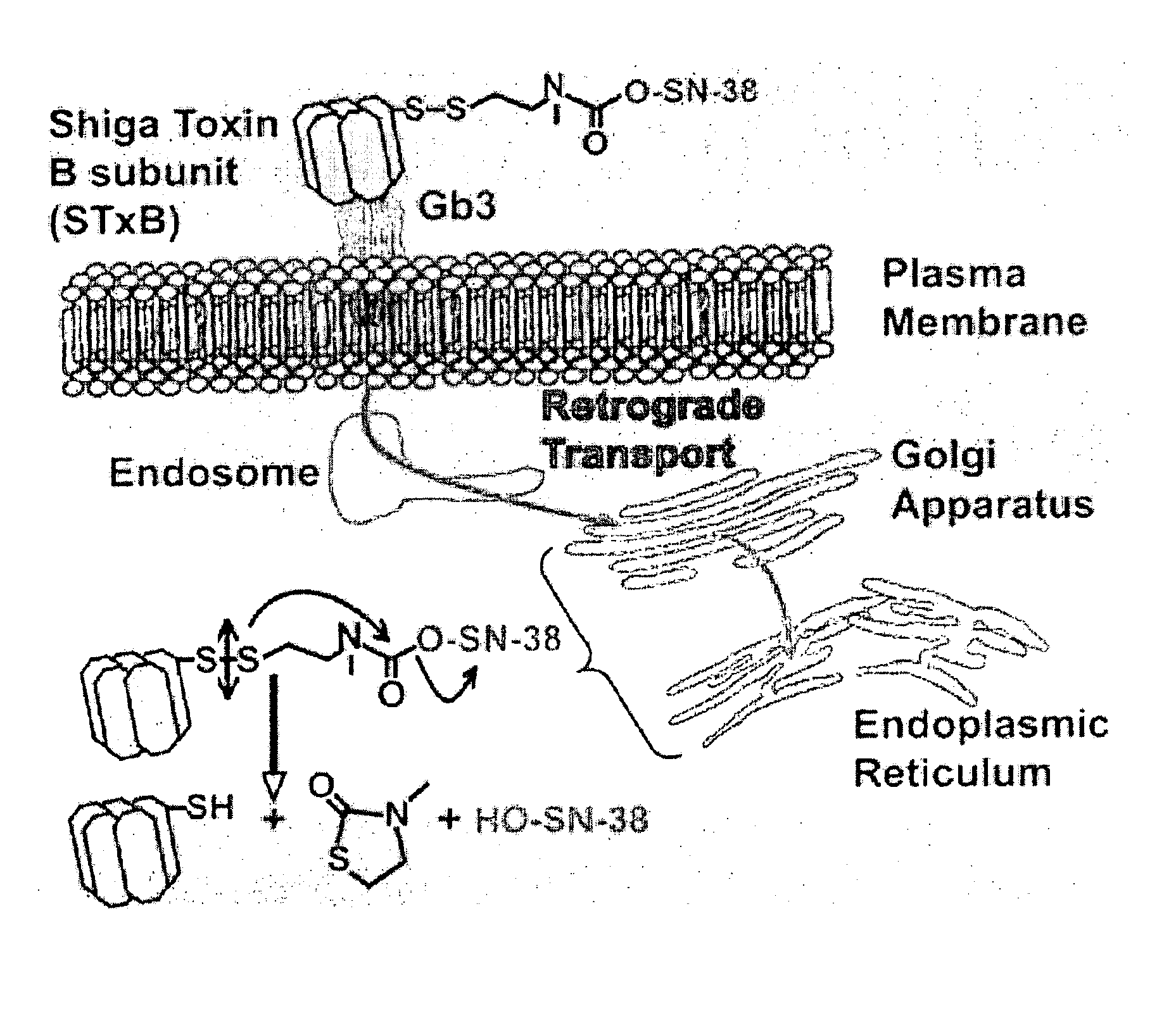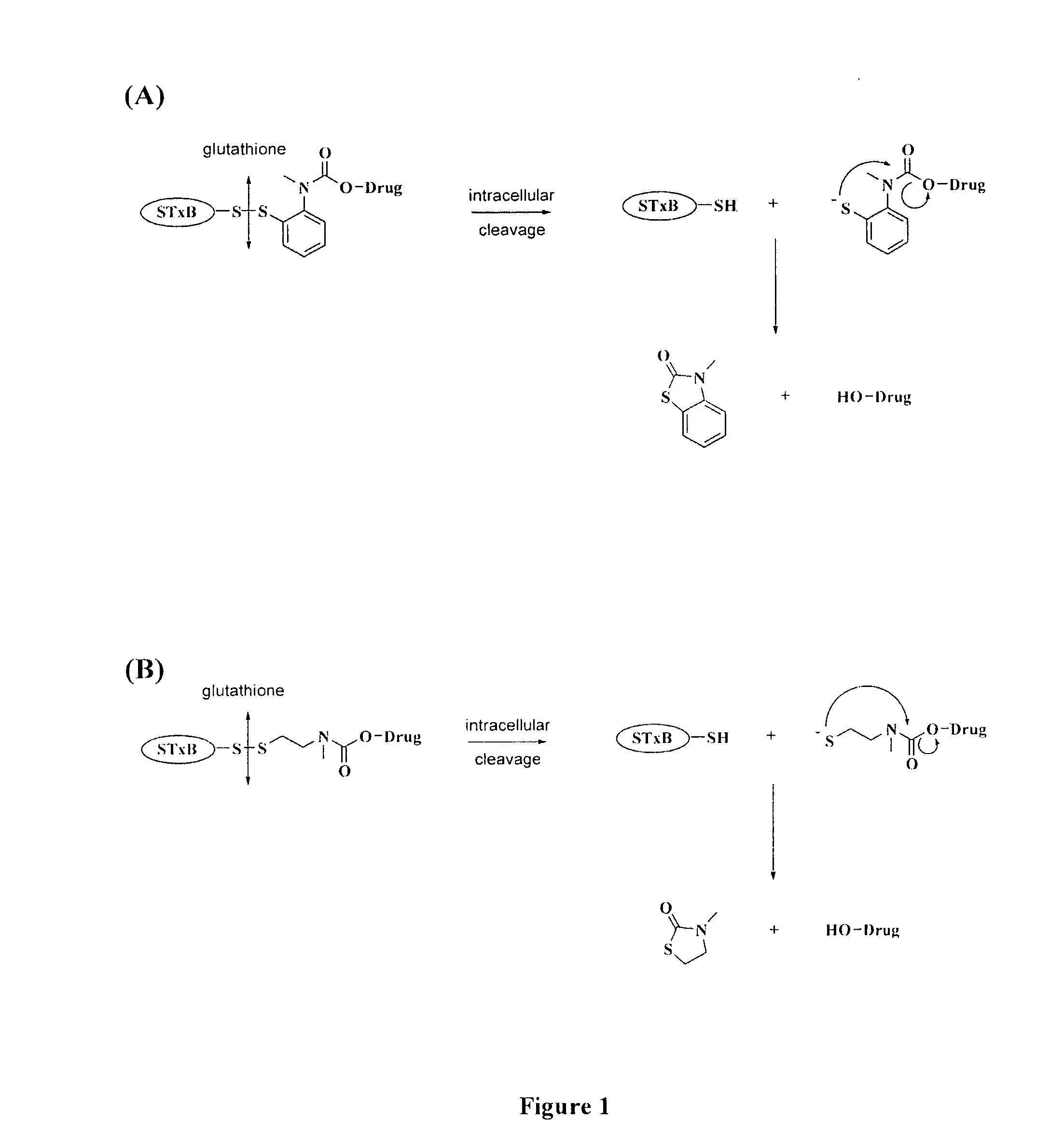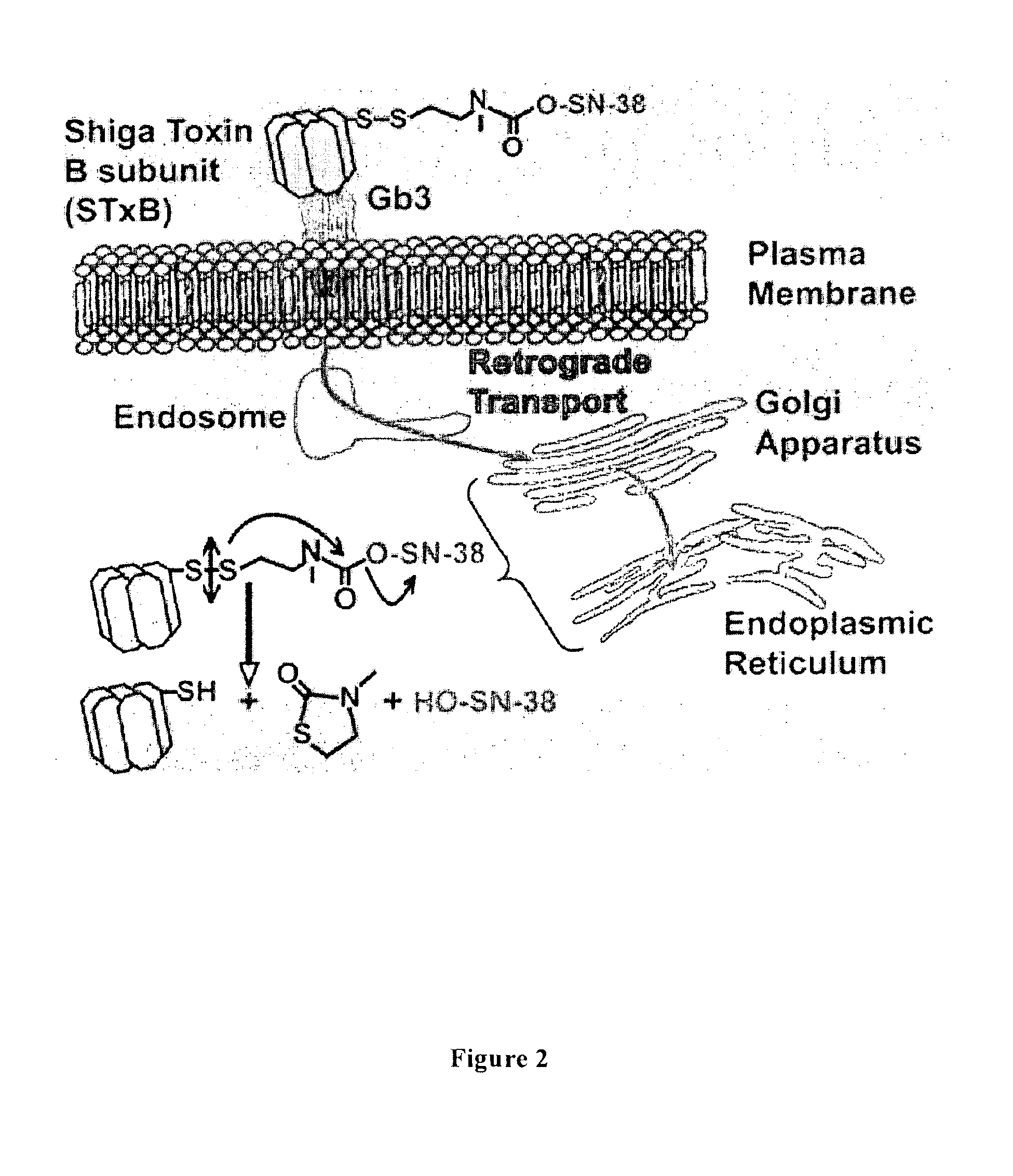Shiga toxin b-subunit/chemotherapeutics conjugates
- Summary
- Abstract
- Description
- Claims
- Application Information
AI Technical Summary
Benefits of technology
Problems solved by technology
Method used
Image
Examples
example 1
Preparation and Stability of STxB / SN-38 and STxB / Biotin Conjugates
[0147]Preparation. Two prodrugs were designed and prepared based on SN-38 (compound 1), the active principle of CPT11 (Campto), which is used in the treatment of colorectal carcinoma (E. Van Cutsem et al., Eur. J. Cancer, 1999, 35: 54). SN-38 belongs to the class of camptothecin derivatives, which are cytotoxic by inhibition of topoisomerase I, and is one of the most efficient compounds in this family (B. Gatto et al., Curr. Pharm. Des., 1999, 5: 195). For coupling SN-38 to the Shiga toxin moiety, an STxB variant with a thiol functionality, termed STxB-Cys, was used that was specifically designed for site-directed chemical cross-linking in the laboratory of the present Applicants (PCT Publication No. WO 02 / 060937; and M. Amessou et al., Current Protocols in Cell Biology, J. Bonifacino et al. (Eds.), Wiley, Hoboken, 2006, chap. 15.10).
[0148]The phenolic position of SN-38 was chosen to build self-immolative spacers that...
example 2
In vitro Activity of STxB / SN-38 Conjugate 3
[0153]Compound 3 was chosen for an in-depth characterization on HT-29 colorectal carcinoma cells. ELISA analysis with 3b demonstrated that cleavage became detectable in the 6-24-h time interval, and was essentially complete at 48 hours (FIG. 5).
[0154]The same results were obtained using HeLa cells Immunofluorescence analysis was used to demonstrate that cleavage occurred intracellularly (FIG. 6). Consistent with ELISA data, no cleavage could be detected after short times of internalization (45 minutes), in which STxB (red) and biotin (green) co-localized with the Golgi marker Rab6 (blue). After 48 hours, STxB (red) could still be detected in the Golgi region (blue). However, the biotin signal was largely gone, which strongly suggests that reduction of the disulfide bond occurred with membranes of the biosynthetic / secretory pathway.
[0155]Having established that biotin model compound 3b is activated in HT-29 cells, the cytotoxic effect of cor...
example 3
In Vivo Activity of STxB / SN-38 Conjugate 3
[0158]Compound 3 was then investigated for its activity in vivo.
[0159]Protocol. Seventeen (17) APC1638N mice of 6 months of age were injected 3 times intravenously at day (D)=1, 8, and 15 with 100 μg of STxB-SN38. As a control, mice were injected with STxB (n=6) at the same molar dose. At D=28 after the first injection, the mice were sacrificed, and their intestine was analyzed first macroscopically on autopsy preparations for the presence of periampular tumors. The same preparations were then also treated for pathological examinations.
[0160]Statistical Analysis. The presence of periampular tumors in STxB-SN38 treated and control mice was determined by macroscopical observation and pathological analysis. Table 1 presents experimental results obtained and expected results.
TABLE 1Numbers of periampular tumors per totalnumber of mice that were analyzed.All miceConditionsExperimental resultsExpected results’STxB-SN389 / 17 (53%) FT1, FT3*17 / 32 (53...
PUM
| Property | Measurement | Unit |
|---|---|---|
| Molar density | aaaaa | aaaaa |
| Molar density | aaaaa | aaaaa |
| Composition | aaaaa | aaaaa |
Abstract
Description
Claims
Application Information
 Login to View More
Login to View More - R&D
- Intellectual Property
- Life Sciences
- Materials
- Tech Scout
- Unparalleled Data Quality
- Higher Quality Content
- 60% Fewer Hallucinations
Browse by: Latest US Patents, China's latest patents, Technical Efficacy Thesaurus, Application Domain, Technology Topic, Popular Technical Reports.
© 2025 PatSnap. All rights reserved.Legal|Privacy policy|Modern Slavery Act Transparency Statement|Sitemap|About US| Contact US: help@patsnap.com



